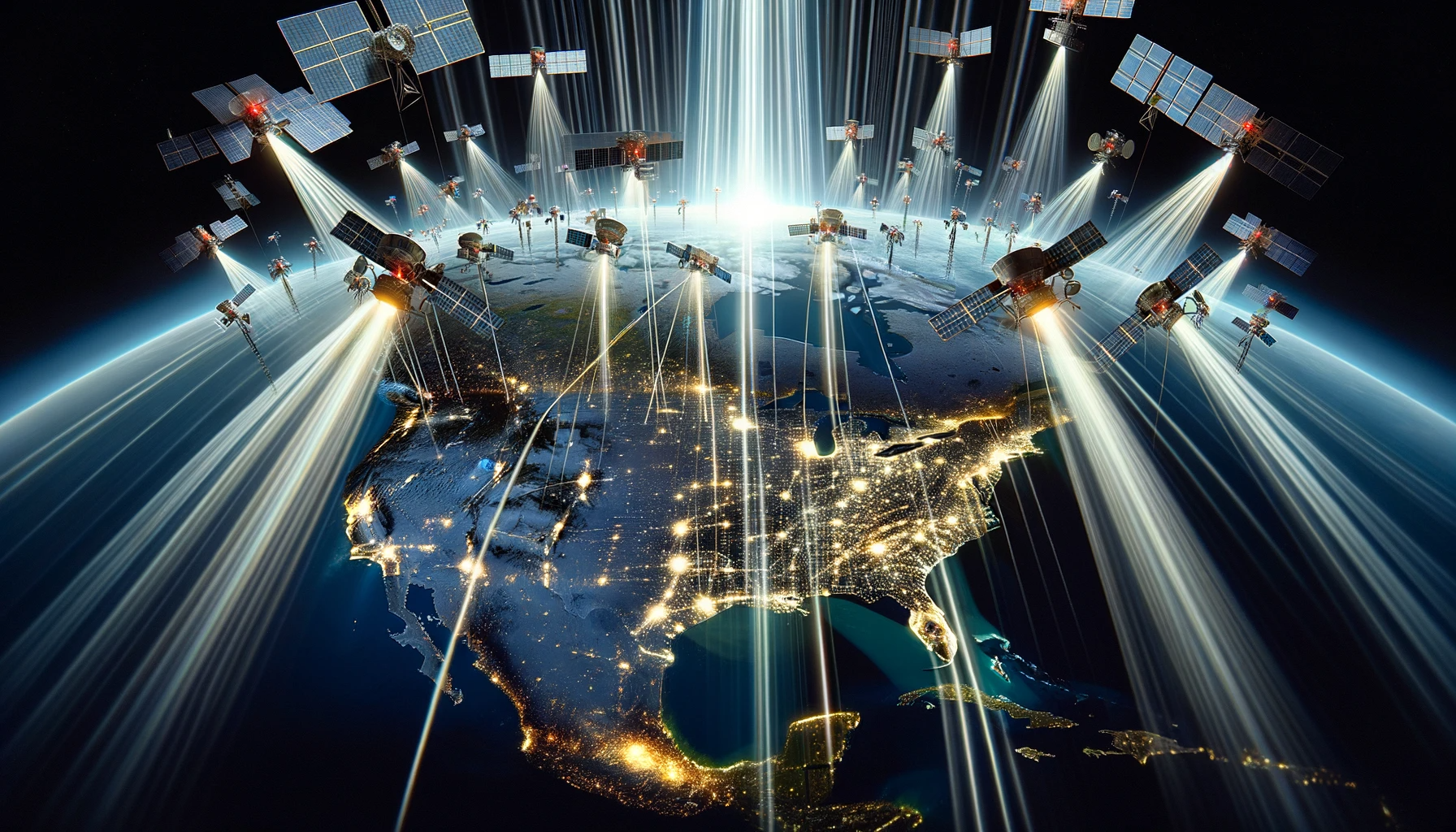Keeping a Health Log: Log unexplained changes in health so you can ascertain if experimental satellite microwave radiation exposure could be related to these health changes.
To effectively track potential health impacts from RF radiation exposure, maintaining a detailed health log is crucial. Here’s how you can do it:
- Daily Tracking: If you are in the targeted location that affects up to 10 million people please note any new symptoms you experience daily between Dec, 10th through June, 7th. Include the time of day, duration of the symptom, and its intensity.
The FCC in a recent filing approved testing on Dec 10th, 2023 for its direct-to-cellular satellite phone system with T-Mobile and the National Science Foundation ahead of a commercial launch next year with hundreds of cell phones in space.
California:
- Mountain View, CA:
- 37.41539, -122.07180
- 37.39100, -121.48750
Within a 100-mile radius of Mountain View, California, there are numerous cities including Sunnyvale, Los Altos, Palo Alto, and San Jose. The area includes parts of the San Francisco Bay Area, which is densely populated and encompasses a mix of suburban and urban environments. The specific cities listed within a 25-mile radius can be found in greater detail at distantias.com, which provides a comprehensive list including distances and directions from Mountain View.
- San Diego, CA:
- 33.46000, -117.15000
- 33.56000, -115.88000
Within a 100-mile radius of San Diego, California, there are several cities and towns, including Oceanside, Escondido, Carlsbad, Chula Vista, and El Cajon. This region is known for its diverse landscapes, ranging from coastal cities to inland urban centers. The area is rich in cultural and recreational activities, given its proximity to the Pacific Ocean and the border with Mexico. For a detailed list of cities within this radius, a resource such as a distance calculator or mapping tool would provide comprehensive information.
- Los Angeles, CA:
- 34.04462, -118.25893
- 34.31502, -118.10536
Within a 100-mile radius of Los Angeles, California, there are numerous cities including Long Beach, Anaheim, Santa Ana, and Irvine. This region, known as the Greater Los Angeles Area, is one of the most populous metropolitan areas in the United States, encompassing a vast network of cities and communities that offer a wide array of cultural, economic, and natural attractions.
Kansas:
- Kansas City, KS:
- 38.91540, -94.65727
- 39.92200, -96.35200
Within a 100-mile radius of Kansas City, Kansas, you will find cities such as Topeka, KS, Lawrence, KS, and St. Joseph, MO. The region straddles the border between Kansas and Missouri, encompassing a diverse landscape that includes urban areas, suburban communities, and rural countryside. As a major metropolitan area, Kansas City serves as a cultural and economic hub for the region.
Washington:
- Redmond, WA:
- 47.67530, -122.12833
- 47.35394, -121.45111
- 48.05000, -120.10000
Within a 100-mile radius of Redmond, Washington, notable cities include Seattle, Tacoma, and Everett. This area, part of the Puget Sound region, is known for its tech industry, natural beauty, and vibrant urban centers. Redmond itself is often associated with technology, being the home of Microsoft and other tech companies.
Virginia:
- Reston, VA:
- 38.95030, -77.37785
- 38.49230, -79.68790
Within a 100-mile radius of Reston, Virginia, the area encompasses the city of Washington D.C., along with other notable cities such as Arlington, Alexandria, and Frederick. This region is part of the Washington Metropolitan Area and is known for its significant historical sites, government institutions, and diverse communities.
- Virginia Beach, VA:
- 36.84400, -75.98169
- 36.62074, -76.54898
Within a 100-mile radius of Virginia Beach, Virginia, you will find cities such as Norfolk, Chesapeake, and Newport News. This region, known as Hampton Roads or the Tidewater area, is characterized by its large military presence, including naval bases, and a rich historical heritage. It is a coastal area with numerous waterways and natural harbors.
Texas:
Within a 100-mile radius of Dallas, Texas, major cities include Fort Worth, Arlington, Plano, and Irving. This region is part of the Dallas–Fort Worth Metroplex, one of the largest and most populous metropolitan areas in the United States, known for its diverse economy, cultural richness, and historic significance in the state of Texas.
- Houston, TX:
- 29.75328, -95.36233
- 28.71184, -98.78858
Within a 100-mile radius of Houston, Texas, you will find cities like Galveston, Sugar Land, Beaumont, and Conroe. This region is known for its diverse landscape, encompassing both urban centers and coastal areas along the Gulf of Mexico. Houston itself is a major city with a strong presence in industries such as energy, aeronautics, and healthcare.
Oklahoma:
Within a 100-mile radius of Bethel, Oklahoma, you will find cities such as McAlester, Ardmore, and Durant. This region is characterized by rural landscapes and small towns, reflecting the quieter, more pastoral side of Oklahoma. It’s an area known for its natural beauty and outdoor recreational opportunities.
Ohio:
- Columbus, OH:
- 39.95891, -82.99997
- 39.65233, -82.02935
Within a 100-mile radius of Columbus, Ohio, you will find cities such as Dayton, Cincinnati, and Mansfield. This region is in the heartland of Ohio, featuring a mix of urban centers and rural areas. Columbus itself is a major city and the state capital, known for its diverse economy and cultural offerings.








